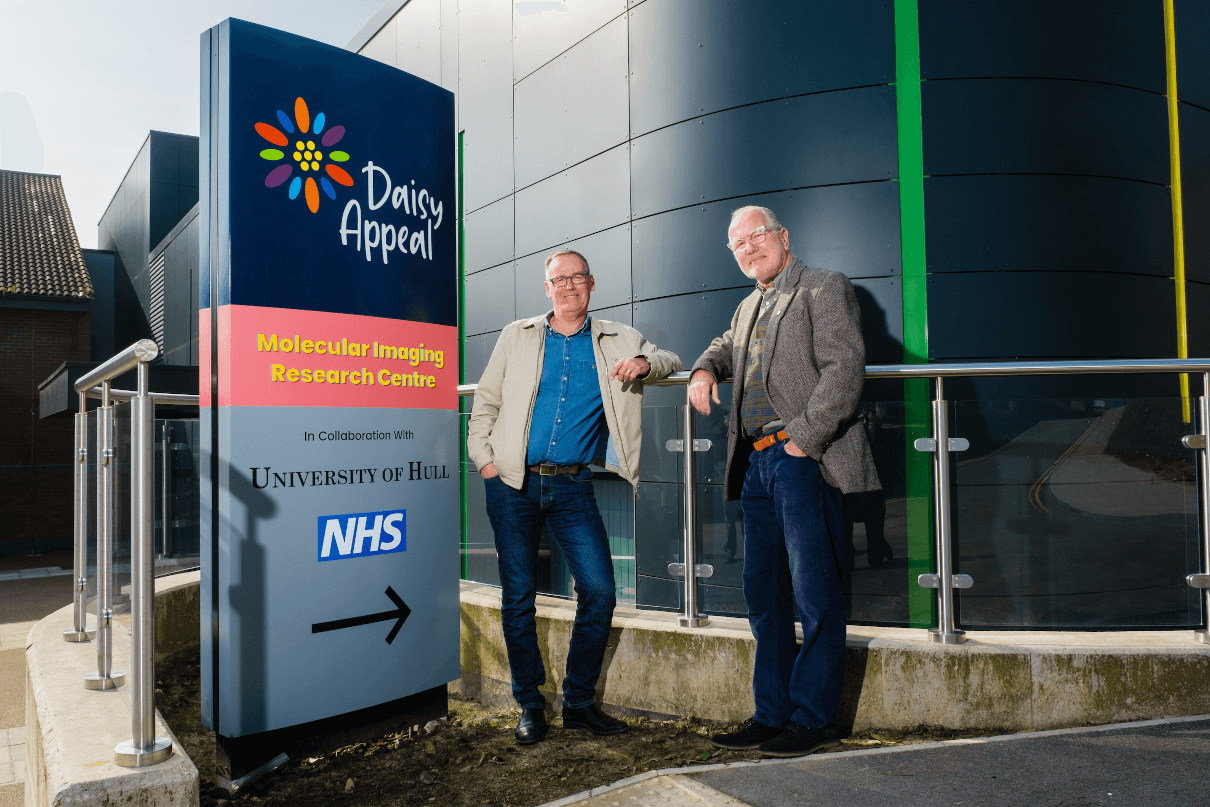A charity working to offer UK-leading detection and personalised treatment facilities for patients with cancer, heart disease and dementia has unveiled its new facilities at the £8.8 million Molecular Imaging Research Centre.
Chair of the Daisy Appeal charity Professor Nick Stafford was joined by GE Healthcare project manager Lars-Olof Arlasjö on a tour of the facility at Castle Hill Hospital, Cottingham, pictured here. They unveiled a Daisy Appeal totem outside the centre and then took a tour of the facilities including GE Healthcare’s GENtrace 600 cyclotron, which was delivered in October and has now been assembled. They also saw the hot cells, which have been in place for two years and have now been set up by technicians from Italian manufacturer Tema Sinergie.
 Professor Stafford said: “It’s been a long haul because of COVID-19 and various technical difficulties but we are here now and by the summer we will be starting to use the equipment. It’s great to see something that we have planned for a decade coming to fruition.
Professor Stafford said: “It’s been a long haul because of COVID-19 and various technical difficulties but we are here now and by the summer we will be starting to use the equipment. It’s great to see something that we have planned for a decade coming to fruition.
“We decided to buy the cyclotron about four years ago and COVID-19 is the main reason everything has taken so long.”
Based at GE Healthcare’s site in Uppsala, Sweden, Arlasjö manages projects across Europe. He said: “This is the first GENtrace 600 cyclotron in the UK and that is an important step for us, but because of travel restrictions I haven’t been to Castle Hill since the cyclotron was delivered in October.
“It has been really good working with the team here; it is great to see how things have been growing at the site and to see the results of a lot of hard work.”
Since 2000 the Daisy Appeal has raised more than £20 million to fund cutting-edge research and state-of-the-art equipment and facilities.
The Daisy Appeal centre opened at Castle Hill in 2008 and was followed, in 2014, by the opening of the Jack Brignall PET-CT Scanning Centre, housing a Siemens Healthineers scanner.
Once up and running the centre will initially be able to produce Fluorine-18 radiotracers, which are currently used in most scans but are made elsewhere in large scale production units. During the next two or three years the centre will also be able to produce Carbon-11 radiotracers, which have great potential for neurological and cardiological use and are expected to open up more opportunities.
The new building creates the opportunity for the isotopes to be piped directly from the cyclotron to hot cells in the room next door, where the product will be processed, checked and then delivered through a hatch in the wall direct to the Jack Brignall centre, for injection into patients.
Professor Stafford added: “This investment establishes us as a UK leader and one of the best in the world, not only in terms of the service but also with regard to research and development, which is just as important because it will attract the best research-based scientists to come and work at a centre that is now established and recognised internationally.”
See the full report on the front page of the May 2022 issue of RAD Magazine.


